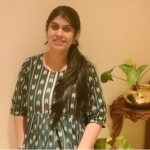We value your privacy
We use cookies to enhance your browsing experience, serve personalised ads or content, and analyse our traffic. By clicking "Accept All", you consent to our use of cookies.
We use cookies to help you navigate efficiently and perform certain functions. You will find detailed information about all cookies under each consent category below.
The cookies that are categorised as "Necessary" are stored on your browser as they are essential for enabling the basic functionalities of the site. ...
Necessary cookies are required to enable the basic features of this site, such as providing secure log-in or adjusting your consent preferences. These cookies do not store any personally identifiable data.
No cookies to display.
Functional cookies help perform certain functionalities like sharing the content of the website on social media platforms, collecting feedback, and other third-party features.
No cookies to display.
Analytical cookies are used to understand how visitors interact with the website. These cookies help provide information on metrics such as the number of visitors, bounce rate, traffic source, etc.
No cookies to display.
Performance cookies are used to understand and analyse the key performance indexes of the website which helps in delivering a better user experience for the visitors.
No cookies to display.
Advertisement cookies are used to provide visitors with customised advertisements based on the pages you visited previously and to analyse the effectiveness of the ad campaigns.
No cookies to display.
In this presentation, we delve into the transformative potential of AI in enhancing content creation efficiency. We explore two primary use cases: restructuring existing content and developing new content with AI. By leveraging AI technologies, we aim to improve process efficiency, content quality, and scalability. The presentation will cover strategic partnerships, initiatives, and practical demonstrations of AI applications in content management. Attendees will gain insights into how AI can revolutionize content creation, leading to significant improvements in customer experience and operational efficiency.
Nicholas Rowlands, Varian

Nicholas Rowlands is an experienced Information Architecture and Systems Manager at Varian Medical Systems, where he leads a dedicated team responsible for supporting Global Product Labeling functions and driving innovative solutions in information management. His team is at the forefront of digital transformation initiatives, exploring the potential of AI to enhance content creation efficiency, optimize workflows, and streamline information delivery processes.
With over 25 years of industry experience, Nicholas specializes in implementing DITA XML content management systems, translation management solutions, and developing comprehensive information architecture strategies for geographically dispersed technical documentation and localization teams.
Throughout his career, Nicholas has played a pivotal role in managing content solutions for the medical, pharmaceutical, and engineering sectors. At Varian, he continues to champion the use of cutting-edge technologies, including AI and structured authoring techniques, to enhance global product labeling and technical content creation.
In an interactive interview format, we will explore the strategies and practices that have propelled the team at UiPath to remarkable success, particularly in adopting a Component Content Management System (CCMS) to manage technical documentation.
Cristina Popescu will share her expertise in managing a collaborative and innovative team environment, overcoming common challenges, and driving continuous improvement. She will delve into the best practices for implementing a CCMS and DITA, highlighting how it has streamlined their documentation processes, improved content consistency, and enhanced information delivery to UiPath customers.
Discussion points include:
– Business insights for the initial adoption of a CCMS
– Team involvement in the process, lessons learned
– Governance and change management
– Internal benefits, automation and continued challenges
– Customer benefits
– Future projects
We’ll open the floor to questions from the audience.
Cristina Popescu, UiPath
Chip Gettinger, RWS
 With a rich background in Technical Writing and professional translation from 2004, Cristina Popescu currently leads the Product Documentation department at UiPath. Throughout her career, she has garnered an in-depth understanding and proficiency in transforming complex information into understandable content, crucial for a wide range of audiences. At UiPath, recognized as a unique company on the Romanian IT market and a global market leader in the area of Business Automation, Cristina oversees the production of high-quality documents that are integral to the UiPath users’ experience.
With a rich background in Technical Writing and professional translation from 2004, Cristina Popescu currently leads the Product Documentation department at UiPath. Throughout her career, she has garnered an in-depth understanding and proficiency in transforming complex information into understandable content, crucial for a wide range of audiences. At UiPath, recognized as a unique company on the Romanian IT market and a global market leader in the area of Business Automation, Cristina oversees the production of high-quality documents that are integral to the UiPath users’ experience.
 Chip Gettinger is VP of Global Solutions Consulting for RWS, managing a global solution consulting team. His passion and skills are engaging with customers to mature business requirements to achieve a global digital content strategy. This leads to adopting RWS content technologies to realize the benefits of structured content authoring and management. He works closely to employ industry best practices and standards, connecting with expert consultants, partners, and customers to achieve results.
Chip Gettinger is VP of Global Solutions Consulting for RWS, managing a global solution consulting team. His passion and skills are engaging with customers to mature business requirements to achieve a global digital content strategy. This leads to adopting RWS content technologies to realize the benefits of structured content authoring and management. He works closely to employ industry best practices and standards, connecting with expert consultants, partners, and customers to achieve results.
We are now seeing the first concrete outcomes from early experimentation and adoption of Generative AI in Technical Communications. With hands-on experience from implementing GenAI-powered content delivery for a range of customers, we can now share real-world insights from these early adopters.
Have the concerns around GenAI implementation been fully addressed, or are some challenges still unresolved? How do organizations evaluate the reliability and impact of GenAI, and what initial results are being observed?
Join us for a compelling session where we reveal data-driven insights, successes, obstacles, and critical learnings from key GenAI deployments in Content Delivery.
Fabrice Lacroix, Fluid Topics
 Fabrice Lacroix is a serial entrepreneur and a web pioneer. He has been working for 25 years on the development of innovative solutions around search technology, content enrichment and AI. He is the founder of Fluid Topics, the leading Content Delivery Platform that reinvents how users search, read and interact with technical documentation.
Fabrice Lacroix is a serial entrepreneur and a web pioneer. He has been working for 25 years on the development of innovative solutions around search technology, content enrichment and AI. He is the founder of Fluid Topics, the leading Content Delivery Platform that reinvents how users search, read and interact with technical documentation.
What are the document types delivered by Synopsys?
What is the volume of documents delivered by Synopsys?
Evolution to DITA – Challenges?
How is DITA helping us?
It would be a great pleasure to share our DITA journey.
Snehal Borole & Ritu Saxena, Synopsys
 * A seasoned technical writer with 10+ years of experience in the industry.
* A seasoned technical writer with 10+ years of experience in the industry.
* Currently working as a Staff Technical Writer at Synopsys Inc
* Specialized in technical writing and document infrastructure development.
* Qualification: M.Tech Electronics & Telecommunication Engineering
 * A highly experienced leader for technical writers with an industry expertise of 20 years.
* A highly experienced leader for technical writers with an industry expertise of 20 years.
* Qualification: M.Tech. Computer Science
* Work Experience: Currently working as Technical Publications Manager at Synopsys Inc
* Specialized in deploying DITA strategies for the team with various tools.
Raise your hand if your organization has asked you how you can use AI to do things better and faster. Since the day ChatGPT came online, we’ve seen a level of enthusiasm rarely seen in technical communication. We’re seeing tools vendors leverage AI with DITA editing and delivery. We’re being promised that AI can enhance the creation, organization, and delivery of technical content, transforming static documentation into dynamic, context-aware resources.
While the potential of AI is clear, it’s essential to manage expectations and understand that successful AI implementation hinges on effective management and utilization of information. Not only is the quality of information crucial, but so are your processes and the establishment of a global baseline. A pressing question remains: how do we quantify the expected improvements in efficiency and quality?
This presentation explores the complex topic of measuring the impact of AI within a DITA ecosystem. We will discuss the evaluation of AI as a tool and the assessment of the information that it helps produce. Topics will include the concept of “fluffy content,” the differences between generating factual content and lighthearted chatbot discussions, exploring potential methodologies for measuring and tracking relevant metrics, and the importance of considering both qualitative (soft) and quantitative (hard) metrics.
Laura Katajisto, Etteplan
 Laura has over 20 years of experience in the field of technical communication, yet she’s never aged a day. She’s explored the intricacies of technical communication from both business and IT perspectives, beginning her career as a technical writer and information designer before advancing to development roles specializing in DITA, CCMS, and digital content delivery. Presently, Laura holds the position of Lead Information Architect at Etteplan. In this role, she owns the end-to-end processes related to information throughout its lifecycle and is responsible for Etteplan’s information architecture, among other duties. She also serves as a product owner in Etteplan’s AI development initiatives. Laura has long had board roles in the Finnish Technical Communication Society, and still dreams of writing her PhD in DITA.
Laura has over 20 years of experience in the field of technical communication, yet she’s never aged a day. She’s explored the intricacies of technical communication from both business and IT perspectives, beginning her career as a technical writer and information designer before advancing to development roles specializing in DITA, CCMS, and digital content delivery. Presently, Laura holds the position of Lead Information Architect at Etteplan. In this role, she owns the end-to-end processes related to information throughout its lifecycle and is responsible for Etteplan’s information architecture, among other duties. She also serves as a product owner in Etteplan’s AI development initiatives. Laura has long had board roles in the Finnish Technical Communication Society, and still dreams of writing her PhD in DITA.
The presentation will reflect on our transformation, transitioning from MS Word to DITA.
Who We Are: We are a growing logistics automation company with a Documentation Department established in 2016, consisting of two teams: one for customer project documentation and one for product documentation.
Why Did We Choose DITA? We chose DITA due to increasing volumes of content, the need for localization, and a shift from Engineer-to-Order (ETO), which requires highly customized content, to Configure-to-Order (CTO), which emphasizes standardization and modularization of products.
How We Started: We began by developing a content model to address both current and future needs, explaining how DITA supports these requirements. We also started elaborating on and sharing our content strategy with the rest of the organization, advocating for the power of content reuse.
Our Moment of Truth: We had our first release of CTO content—how did it go?
What Did We Learn and How Do We Envision the Future? We will share our lessons learned and outline the next steps in our journey.
Amandine Huchard, Vanderlande Industries
 I’m a dedicated team leader and specialist in documentation and information architecture, passionate about improving content strategies through DITA and CCMS. With expertise in information modeling, content reuse strategy, and change management, I have successfully managed the migration of legacy content and developed robust documentation frameworks.
I’m a dedicated team leader and specialist in documentation and information architecture, passionate about improving content strategies through DITA and CCMS. With expertise in information modeling, content reuse strategy, and change management, I have successfully managed the migration of legacy content and developed robust documentation frameworks.
As a leader, I guide and mentor a team of technical writers, helping them grow professionally while ensuring high-quality documentation. Together, we create operator manuals and training modules, driving efficiency in documentation processes.
Outside of work, I enjoy drawing—both on paper and digitally—and spending time with my two young kids. Fun fact: I love movies but won’t enjoy the ending unless it leaves room for the imagination!
Many industrial companies have heavy focus on maintenance business. With the introduction of connectivity, IoT and remote monitoring data, companies can monitor the status of equipment in real time, proceed to fix before breakage and implement condition based maintenance programs.
But where does the human fit into this? In many cases, the maintenance technicians are a crucial part of the maintenance business, performing preventive maintenance checks, repairing and replacing components, and troubleshooting. The data flowing from connected equipment can help them perform these tasks more efficiently and safely, but how do you turn the data flow into smart task-based information that properly guides them? By leveraging DITA delivery!
With smartly designed DITA tasks and advanced dynamic delivery, we can deliver real-time instructions to technicians to support their work. With the technicians getting the exact information that they need without having to look for it, their work is performed efficiently and that turns into value for maintenance business. Time is money, and in the context of industrial maintenance, it can translate into millions.
Hanna Heinonen, Kone Corporation
 Hanna Heinonen is the Digital Content Lead and Service Product Owner for Technical Content Strategy and Technology at Kone Corporation, Finland. She is specialized in information architecture and design, user-centered, task-based documentation, DITA XML, and content management systems and tools. Hanna has researched what XR can offer to technical communications and has a PhD in Interactive Technology. Her current research interests include the industrial metaverse and GenAI, both in the context of technical communication.
Hanna Heinonen is the Digital Content Lead and Service Product Owner for Technical Content Strategy and Technology at Kone Corporation, Finland. She is specialized in information architecture and design, user-centered, task-based documentation, DITA XML, and content management systems and tools. Hanna has researched what XR can offer to technical communications and has a PhD in Interactive Technology. Her current research interests include the industrial metaverse and GenAI, both in the context of technical communication.
Imagine that you are facing the challenge of moving to structured documentation. You have no idea how to do it or where to even to start… Maybe you have been doing documentation in Adobe InDesign or MS Word so far. You only heard about this “DITA” thing and heard it’s quite cool but haven’t done any work with it. Buckle up! You will learn that the process of implementing DITA is not an easy task, especially when it must be done alongside your daily tasks. The good news is that you will figure it out!
Embark with me on this exciting journey of big successes and challenges faced. Come to hear about triumphant moments and regrettable mistakes. Whether you are a beginner or a seasoned professional, whether you are only thinking about moving to DITA or you have already moved – you will find something to take with you.
Justyna Hietala, Beamex Oy Ab
 Justyna Hietala is a Senior Designer in Technical Documentation at Beamex Oy Ab.
Justyna Hietala is a Senior Designer in Technical Documentation at Beamex Oy Ab.
A passionate professional with almost 10 years of experience in technical writing and genuine interest in technology. Skilled in DITA and DITA Open Toolkit. At Beamex responsible for implementing DITA structured documentation model, creating the user documentation as well as creating, customizing and managing DITA-OT plugins using XSLT and XSL-FO for publishing.
The DITA XML standard is recognized for good reason for its versatile reuse capabilities which allow creating content which is consistent and can be used to single source the entire publication needs of a company.
AI editing tools can bring lots of extra benefits for technical documentation writers, capabilities for re-writing content to improve readability, grammar checking, content generation, generating reports and much more.
But how do these benefits interact with the DITA XML features (content reuse, specialization) and how can AI tools be developed to work better with these DITA XML specific features?
Radu Coravu, Syncro Soft/Oxygen XML Editor
 Radu Coravu is a DITA XML expert working on oXygen XML Editor. During the last years, his main focus has been on the development of the visual XML Author editing environment and the specific-DITA support provided by oXygen, combined with working on the Oxygen AI Positron add-on which adds specific AI functionality for editing DITA XML content.
Radu Coravu is a DITA XML expert working on oXygen XML Editor. During the last years, his main focus has been on the development of the visual XML Author editing environment and the specific-DITA support provided by oXygen, combined with working on the Oxygen AI Positron add-on which adds specific AI functionality for editing DITA XML content.
He provides support for complex integrations and helps steer the product in the right direction, all this with some development on the side.
Abstract Coming Soon
Kris Eberlein, Mayo Clinic
 Bio Coming Soon
Bio Coming Soon
As Generative AI has dominated the public debate in the last two year, myths, misconceptions, euphoria and fears have arisen.
This presentation will shed light on some of these aspects and present practical use cases. They also relate to the improvement of text quality and in particular to the development of a terminological basis, where linguistic intelligence and Generative AI go hand in hand.
Torsten Machert, Congree
 Torsten studied Russian and Spanish at the Humboldt University in Berlin. He spent 20+ years in the CMS industry before joining Congree.
Torsten studied Russian and Spanish at the Humboldt University in Berlin. He spent 20+ years in the CMS industry before joining Congree.
Organizations are increasingly recognizing the need for structured content to streamline their operations and enhance their content strategy. This presentation explores the intersection of structured content and Content Operations (Content Ops), demonstrating how this powerful combination can drive efficiency, consistency, and scalability in content creation and delivery.
We’ll provide a comprehensive framework for building a compelling business case that articulates the tangible benefits of implementing structured content within a content ops framework, helping you gain buy-in from stakeholders and position your organization for success in the digital age.
Patrick Bosek, Heretto
 Patrick is a co-founder and CEO of Heretto, an industry-leading SaaS solution for content operations. Since beginning Heretto in 2005, Patrick has worked on a wide range of projects all focused on improving authoring, production, and distribution of content. Patrick is a software industry professional specializing in developing, productizing, and solving problems with product content software. He is a skilled developer, thoughtful manager, and passionate customer advocate.
Patrick is a co-founder and CEO of Heretto, an industry-leading SaaS solution for content operations. Since beginning Heretto in 2005, Patrick has worked on a wide range of projects all focused on improving authoring, production, and distribution of content. Patrick is a software industry professional specializing in developing, productizing, and solving problems with product content software. He is a skilled developer, thoughtful manager, and passionate customer advocate.
Every technical publication team, CCMS product, and authoring tool company is planning to use artificial intelligence (AI) to revolutionize content delivery. The integration of AI with structured content systems like DITA (Darwin Information Typing Architecture) is becoming increasingly crucial. This session explores the strategic planning and implementation of DITA content for AI enablement on the authoring side, providing insights into optimizing content for intelligent systems and letting the AI engines perform as expected.
In this presentation, the presenter will cover the following sub-topics:
– Understanding AI-Enabled Content
– Planning and Structuring Content
– Implementing AI Attributes in DITA
– Best Practices for Intent-Based Search
Amit Siddhartha, Metapercept

Amit Siddhartha has over 24 years of experience in DITA authoring, DITA implementation, Information Architecture, and Information Solutions. Amit has been dedicated to helping organizations harness the power of structured content to enhance their documentation processes and improve overall content delivery.
Throughout his extensive experience, he has worked on numerous large-scale projects, leading teams in successfully adopting and implementing DITA standards. His expertise spans the full spectrum of DITA, from content creation and management to deploying sophisticated information architectures that support complex product documentation.
Amit is spearheading the development of an AI-enabled content delivery platform designed to elevate the user experience through advanced intent-based search capabilities.
At Oracle Cloud Infrastructure, documentation comes from a variety of sources, often using different content formats. While we regularly entertain requests to support new content formats, it is also worth looking at what is there today to see how we can simplify. In this session, we will see what went into the decision to move off of a dedicated tool for product release notes and migrate that content to DITA. Replacing the tool was a months-long effort with technical challenges, process changes, and a major content migration. With our final cutover in August 2024, we are now in a good place to evaluate: what did we lose, what did we gain, and do we wish we could go back?
Robert Anderson, Oracle
 Robert Anderson has been working with DITA XML and DITA processors for over 20 years. He is co-editor of several versions of the standard, including the upcoming DITA 2.0, and has worked closely on the DITA Open Toolkit. Outside of the standard, Robert supports the engineering infrastructure behind Oracle’s Cloud documentation – from the pipeline used to publish content (DITA and otherwise) all the way to the site itself.
Robert Anderson has been working with DITA XML and DITA processors for over 20 years. He is co-editor of several versions of the standard, including the upcoming DITA 2.0, and has worked closely on the DITA Open Toolkit. Outside of the standard, Robert supports the engineering infrastructure behind Oracle’s Cloud documentation – from the pipeline used to publish content (DITA and otherwise) all the way to the site itself.
DITA is a powerful architecture for authoring, producing, and delivering topic-oriented, information-typed content that can be reused and single-sourced in a variety of ways. However, this power and flexibility come with a certain level of complexity. When managing a DITA project, there are numerous areas and tasks that you need to address:
– DITA Maps structure editing
– Visual editing for topics
– Content Reuse and profiling
– Search for components or topics throughout the project
– Spell Checking
– Terminology Checking
We will explore how AI can help increase productivity in all of these stages and tasks. For example:
– Summarize text and create short descriptions
– Various ways to re-write content and improve it, including grammar checking
– Visual image recognition use cases
– Improve existing XML structure
– Translations
– Generate content and documentation drafts using RAG
– Editorial support, proofreading, and integrating feedback
Alexandru Jitianu, Syncro Soft/Oxygen XML Editor
 Alex Jitianu has been working for more than 15 years for Syncro Soft Ltd., the producer of the popular Oxygen XML Editor. During this period, his main focus has been in the development of technical documentation tools and DITA specific support.
Alex Jitianu has been working for more than 15 years for Syncro Soft Ltd., the producer of the popular Oxygen XML Editor. During this period, his main focus has been in the development of technical documentation tools and DITA specific support.
The transition from an existing authoring system to structured content management with DITA poses major challenges for everyone involved. One of the first hurdles is the question of where to start and how to establish a reliable migration process. Based on our experience as a company that has successfully migrated legacy content from various structured and unstructured systems to DITA-compliant formats for several clients, we are able to define a clear roadmap. This roadmap outlines every critical step, from analyzing existing content, defining mapping rules and adapting the DTD, to ensuring a smooth migration that optimizes content reuse and consistency.
In this presentation, a successful case study of two clients’ migration from legacy systems to DITA will be presented. A comprehensive mapping process was used to relate existing content elements to DITA structures. In addition, the DTD was customized to reflect each client’s unique content types and specific requirements.
This experience provided valuable insight into the implementation and integration of DITA. The presentation will explore the intricacies of the migration process, highlighting key challenges and solutions, CMS integration, making the business case for DITA.
Karsten Schrempp and Sofia Darie, Pantopix
 Karsten Schrempp studied mathematics and philosophy at the University in Tübingen. In the meantime, he has gained over 25 years of experience with various well-known companies in the field of technical communication.
Karsten Schrempp studied mathematics and philosophy at the University in Tübingen. In the meantime, he has gained over 25 years of experience with various well-known companies in the field of technical communication.
In 2012, he founded PANTOPIX to consistently implement his path of topic-oriented and knowledge network-based information collection and provision in customer projects.

Sofia Darie studied technical writing and communication in Munich, and she is a technical communication consultant at PANTOPIX. Alongside her interest in structured content, Sofia is fascinated by the power of metadata and various modeling techniques that ensure that content is not only well-organized but also accessible and adaptable across different platforms.
Thanks to AI, many technology companies publishing software solutions helping companies managing some content such as CRMs, Web sites marketing campaigns, community management, corporate Intranet or collaboration platforms, propose Translation as a Feature (TaaF) as an option. Although the feature makes sense and despite the LLMs promises, the quality is not always satisfying especially for customer facing content leading to potential liabilities. At the same time, our TechComm industry is challenged by these innovative processes and technologies.
In this talk, I will present how to reconcile both worlds by leveraging the TechComm assets and quality to improve the efficiency of TaaF to deliver multilingual content in all corporate techno solutions. Beyond the vision, I will also introduce a practical application of this policy.
Dominique Trouche, WhP, a Languagewire Company

Dominique managed several multinational operations in various European countries, the US and South America, prior to joining WhP in 2005 as Managing Director. He opened the subsidiaries in Slovakia, China and North America. Heading Consulting and Innovation at WhP is an expert helping companies engage with their global audience using localization, specializing in: XML Technical documentation, especially DITA, and eLearning.
He is a Data Scientist. His first conference in 1986 was already on AI, the future of IT. He is now Global content consultant with Languagewire a worldwide leader in AI applied to Global Content.
Do all your problems with your existing documentation just go away when you transition to a standardized, topic-based information architecture like DITA? The transition itself is challenging enough, you have to learn how to write new content in DITA, tailor the information architecture to your needs, and find suitable tooling for authoring and publishing content. But beyond that there is a tendency to be overly optimistic when it comes to migrating legacy XML content.
Often, it is possible to come up with a technical solution that will generate DITA content that is valid, except for a bit of manual tweaking, but is that enough? The real challenge is in the semantics. We will show you some cool XSLT 3 features that easily allow to map old XML structures to new XML structures without hardcore XSLT knowledge. And then we’ll see why that’s not good enough.
We would like to share from our experience when and if it is a good idea to simply auto-migrate existing content or and discuss how much human intervention is required to actually improve the content. Sure, AI can also be thrown in the mix, but how far will that get us?
Marion Knebel and Mark Schubert, parson AG
 As technical writer and consultant, Marion Knebel supports customers from the IT industry to create and optimize their structured content. While authoring content is still a part of her daily business, she also designs and implements information architectures, for example, by providing customized DITA schemas and developing metadata concepts to publish the content in a content delivery system.
As technical writer and consultant, Marion Knebel supports customers from the IT industry to create and optimize their structured content. While authoring content is still a part of her daily business, she also designs and implements information architectures, for example, by providing customized DITA schemas and developing metadata concepts to publish the content in a content delivery system.

Mark Schubert is a technical consultant at parson and supports clients regarding authoring tools and publishing solutions. DITA, DocBook, and other document type definitions are part of his daily routine. Due to his experience as a technical communicator, he knows XML-based authoring firsthand. Mark has been an acting member of the iiRDS working groups from the start and was head of working group Development for five years. Currently, he is a member of the iiRDS working groups Development and Tools. As an iiRDS Ambassador he is participating in working groups of the Industrial Ontologies Foundry IOF.
Experience the future of user experience in converting documents into DITA.
Today, migrating PDF and MS Word documents to DITA XML is still a predominantly manual, time consuming and error-prone process, which requires technical skills.
This hand on demonstration session shows a novel, AI-led approach that makes traditional approaches obsolete and empowers you to transform complex documents into DITA at speed and at scale.
Benjamin von Deschwanden, Acodis

Benjamin von Deschwanden is driven by the belief that cutting-edge Document AI technologies have the potential to revolutionize how businesses handle information, streamline workflows, and enhance decision-making processes.
With a background in Computer Science and Teaching Assistant at ETH Zurich, Benjamin co-founded Acodis back in 2016 with the mission to turn any documents into value.
In his current role as Chief Product Officer, he is spearheading the development of groundbreaking products that redefine the way we interact with documents, transforming the future of document processing as we know it.
Patrick Emmisberger, Acodis
 Bio Coming Soon
Bio Coming Soon
Along with many new actions and functionality that was added, the Oxygen AI Positron was made available also as add-on for the Oxygen Web Author browser-based editor as well as inside the Oxygen Content Fusion collaboration platform.
More, the Oxygen AI Positron Enterprise add-on makes is possible now to connect directly to your own AI engine such as via your Open AI account, Azure Open AI service or Anthropic Claude.
We made a selection of really interesting usage scenarios, showing the Oxygen AI Positron Assistant in action, to allow you to understand how exactly it will improve your technical documentation writing process.
Alex Jitianu, Syncro Soft/Oxygen XML Editor

Alex Jitianu has been working for more than 15 years for Syncro Soft Ltd., the producer of the popular Oxygen XML Editor. During this period, his main focus has been in the development of technical documentation tools and DITA specific support.
AI integration with structured content frameworks like DITA-XML revolutionizes content delivery. Transitioning from reactive to proactive content delivery ensures that users find the information they seek and are guided toward the content they might need, even before they realize it. This shift enhances user experience, accelerates decision-making, and improves support processes.
Amit Siddartha, Metapercept Technology Services
 Amit is the CEO of Metapercept Technology Services LLP and the Technical Director at DITAxPresso Technology Pvt. Ltd. Amit is a DITA-XML enthusiast. Amit has been extensively working on the services and solution side of DITA-XML authoring, implementation, information architecture, content migration, and consulting services and solutions for his global clients.
Amit is the CEO of Metapercept Technology Services LLP and the Technical Director at DITAxPresso Technology Pvt. Ltd. Amit is a DITA-XML enthusiast. Amit has been extensively working on the services and solution side of DITA-XML authoring, implementation, information architecture, content migration, and consulting services and solutions for his global clients.
Amit is also a DITA-XML trainer and provides individual and corporate DITA training.
Discover the cutting-edge capabilities of GenAI in the Tech Doc industry! Join us for an exclusive demo of the latest 2025 AI implementations within Fluid Topics’ content delivery platform. Explore how these innovative solutions are revolutionizing technical content, delivering extraordinary user experiences.
Fabrice Lacroix, Fluid Topics
 Fabrice Lacroix is a serial entrepreneur and a web pioneer. He has been working for 25 years on the development of innovative solutions around search technology, content enrichment and AI. He is the founder of Fluid Topics, the leading Content Delivery Platform that reinvents how users search, read and interact with technical documentation.
Fabrice Lacroix is a serial entrepreneur and a web pioneer. He has been working for 25 years on the development of innovative solutions around search technology, content enrichment and AI. He is the founder of Fluid Topics, the leading Content Delivery Platform that reinvents how users search, read and interact with technical documentation.
Integration of oXygen WebAuthor in Alstom / Heysquid CCMS
1.Project overview
The project aims to integrate oXygen WebAuthor, an advanced web-based XML editing solution, into the Heysquid content management system (CCMS) used by Alstom.
2.Demonstration of oXygen WebAuthor integration
 François Léger, 4D Concept
François Léger, 4D Concept
Document architect for the DITA standard, François Léger helps companies structure, optimize and industrialize their content management. His expertise in DITA architecture enables him to design modular, reusable and high-performance solutions.
During this conference, François will present the challenges and benefits of integrating oXygen WebAuthor into Alstom’s Heysquid CCMS.
 Denis Le Roy, 4D Concept
Denis Le Roy, 4D Concept
With proven expertise in cross-media project management, Denis Le Roy successfully manages complex projects, adapting to the specific requirements of various business sectors. Dedicated to managing digital projects and integrating innovative solutions, Denis Le Roy helps companies optimize their content management tools. At this conference, he will present the integration of oXygen WebAuthor within the Heysquid content management system used by Alstom.
Through a concrete demonstration, Denis will explain how this solution transforms the experience of editors by facilitating the creation and structuring of XML content.
Experience how GenAI powers up Draft Space, our easy-to-use, browser-based structured authoring tool. It is based on RWS Fonto technology and designed for security and reliability.
See and test how integrated GenAI/LLM technology supports creating better content faster. It is intuitively designed for authors to easily access within a Draft Space side panel.
Jörg Schmidt, RWS
 Jörg has been working in multiple roles for different CCMS solution providers for more than 20 years. During that time he has helped defining and implementing CCMS solutions in verticals like machinery, automotive, aerospace & defence – but also pharma & finance. Since 2013 he is working for RWS (formerly SDL) as Solution Architect.
Jörg has been working in multiple roles for different CCMS solution providers for more than 20 years. During that time he has helped defining and implementing CCMS solutions in verticals like machinery, automotive, aerospace & defence – but also pharma & finance. Since 2013 he is working for RWS (formerly SDL) as Solution Architect.
Jörg is living and working out of Munich in Germany.
The structured content community stands vindicated. After decades of championing semantic markup, metadata, and robust information architecture, we’re witnessing a dramatic shift as organizations scramble to prepare their content for AI integration. This convergence of AI enthusiasm and modern Content Delivery Platforms (CDPs) has created an unprecedented opportunity to transform how enterprises approach structured content adoption.
This presentation explores how the traditional DITA implementation approach has been turned on its head. Rather than leading with structure, organizations can now begin with content delivery solutions that accommodate mixed content types, gradually building toward full DITA adoption. We’ll discuss how CDP deployment can serve as a catalyst for broader structured content initiatives, demonstrating how this “delivery-first” strategy offers new possibilities for overcoming traditional barriers to DITA implementation.
Attendees will learn practical strategies for leveraging CDPs as an entry point for structure, understanding how to capitalize on AI’s current momentum to drive structured content initiatives, and transforming content operations through this new adoption pathway. We’ll explore how this reversed approach often leads to faster acceptance of DITA principles, particularly when aligned with contemporary AI and delivery requirements.
Frank Miller, Ryffine

Frank Miller is an industry thought-leader whose career has focused on leading enterprise client engagements and building an information development community, He has been involved in dozens of successful DITA implementations and enjoys sharing his insights on trends and facilitating the adoption of best practices throughout the community.
abstract
Name, Company
 Bio
Bio
abstract
Name, Company
 Bio
Bio

